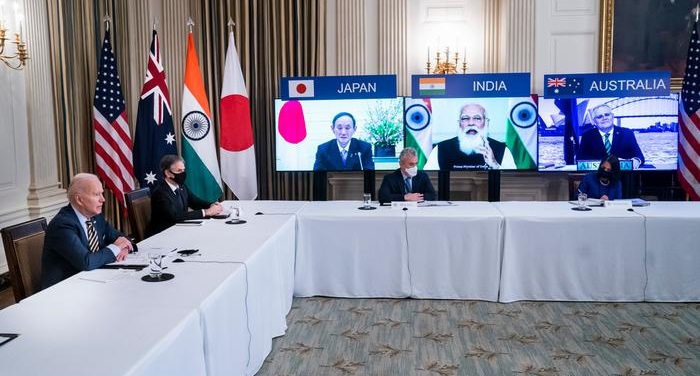- International News
- Tue-2021-03-16 | 01:59 pm

Nayrouz News Agency :
US Secretary of State Anthony Blinken and Defense Secretary Lloyd Austin are due to arrive in Japan on Monday for the first leg of a four-day Asia tour that aims to reaffirm alliances with US partners.
The tour is the first Cabinet-level trip to Asia for the Biden administration, as the US makes a push towards multilateralism and partner-building with an emphasis on Asia, turning away from the unilateral approach taken by former President Donald Trump.
Trump would often complain about the costs of keeping US troops in Japan and South Korea, and had threatened multiple times to withdraw forces if allies did not pay more for military bases.
What is on the itinerary?
In Tokyo, Blinken and Lloyd will hold in-person diplomatic and security talks on Tuesday with their Japanese counterparts, Foreign Minister Toshimitsu Motegi and Defense Minister Nobuo Kishi, as well as Prime Minister Yoshihide Suga.
Virtual meetings with business leaders and civil society members are also on the agenda.
On Wednesday, the pair will head to South Korea where Blinken is expected to discuss Biden's policy towards North Korea.
In both South Korea and Japan, the officials will also discuss shoring up new agreements on sharing costs for stationing US troops.
After South Korea, Pentagon chief Lloyd will head to India for talks with his counterpart Rajnath Singh. The Pentagon said Lloyd will discuss deepening a strategic partnership with India vis a vis China, as relations between Delhi and Beijing have soured over a border dispute.
Blinken will return to the US, and is expected to meet national security advisor Jake Sullivan for talks in Anchorage, Alaska with Chinese government officials.
The secretary of state said last week he expected to "lay out in very frank terms many concerns that we have with Beijing's actions and behavior."
What about policy towards China?
China will be high on the agenda during this week's talks. In a joint editorial published Monday in a newspaper, Blinken and Lloyd wrote that the US is "making a big push" to revitalize ties with friends and partners, especially on ensuring a "free and open"Indo-Pacific region.
"Our combined power makes us stronger when we must push back against China's aggression and threats," they wrote.
"Together, we will hold China accountable when it abuses human rights in Xinjiang and Tibet, systematically erodes autonomy in Hong Kong, undercuts democracy in Taiwan or asserts maritime claims in the South China Sea that violate international law.
"If we don't act decisively and lead, Beijing will," they added.
Washington is also seeking to increase US military capability. Before leaving for Japan, Blinken said that the US' "competitive edge" is eroding as China modernizes its military.
"Our goal is to make sure that we have the capabilities … to be able to offer a credible deterrence to China," he said.
China has claimed almost all of the South China Sea and has built heavily militarized man-made islands. In the East China Sea, Beijing is claiming Japanese controlled islands, which has increased tension with Japan. On the Himalayan border with India, Chinese and Indian troops have clashed over territorial claims.
What was said after 'QUAD' Summit?
The Biden administration's current diplomatic drive in the Indo-Pacific kicked off last week at virtual meeting Friday with President Biden and the leaders of Australia, Japan and India
The countries comprise the "Quad," which is an informal alliance seen as a counterbalance to China.
Biden said Sunday that the summit went "very well," adding the four countries agreed to deepen cooperation on maritime, cyber and economic security issues.
Japan's Chief Cabinet Secretary Katsunobu Kato on Monday welcomed the summit as "a good opportunity for the four countries to confirm their strong commitment as a driving force to achieve a free and open Indo-Pacific."













